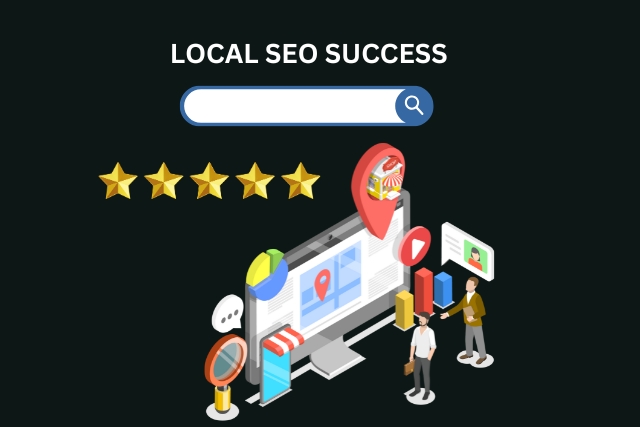- +91-9958267878
- info@nineerial.com
- Unit - 202, Second Floor, EF3 Mall, Sec - 20A, Faridabad, Haryana

In the digital age, local businesses face unique challenges in getting discovered by their target audiences. With most consumers turning to search engines to find nearby services, ensuring your business appears prominently in local search results is critical. One powerful yet often overlooked strategy for improving local search rankings is building citations. This article explores what citations are, their role in local SEO, and essential tips for creating and managing them effectively.
A citation in the context of local SEO refers to any online mention of a business’s Name, Address, and Phone Number (NAP). These citations may appear in directories, social platforms, apps, and websites. They serve as signals to search engines, validating the business’s existence, location, and reliability.
There are two main types of citations:
Citations are crucial to local SEO success for several reasons:
To fully leverage citations for local SEO, businesses must focus on accuracy, consistency, and strategy. Below are detailed steps to help you succeed.
Consistency is the cornerstone of an effective citation strategy. Search engines rely on NAP information to verify your business’s legitimacy. Inconsistent NAP data can confuse both users and algorithms, negatively impacting your rankings.
A Google Business Profile (GBP) is perhaps the most critical citation for any local business. It’s a central hub where your NAP data, reviews, photos, and business updates reside.
Listing your business on authoritative directories boosts credibility and search engine trust. Popular directories include Yelp, Yellow Pages, TripAdvisor, and industry-specific platforms.
Even with the best intentions, incorrect information can creep into your citations. Regular monitoring ensures inaccuracies don’t harm your SEO efforts.
Unstructured citations, such as mentions in blogs or social media, often occur organically. You can encourage this kind of content by engaging your audience.
Reviews play a dual role: they’re a component of your citations and a significant factor in local search rankings.
While backlinks differ from citations, they complement each other in strengthening your local SEO. Local backlinks can serve as unstructured citations.
As technology evolves, new platforms for citations emerge. Staying updated ensures you don’t miss out on valuable opportunities.
To measure the impact of your efforts, monitor your citation performance and its influence on local SEO.
To illustrate the importance of citations, consider a hypothetical example:
Business: Bella’s Bakery, a small, family-run bakery in Portland, Oregon.
Problem: Despite excellent products, Bella’s Bakery struggled to attract local customers due to poor online visibility.
Action Plan:
Results:
Citations are a fundamental component of local SEO. For businesses seeking to dominate local search results, building accurate, consistent, and high-quality citations is non-negotiable. From ensuring NAP consistency to leveraging emerging platforms, every step contributes to greater visibility, trust, and traffic.
Local SEO is an ongoing effort, and maintaining your citation profile requires vigilance. By following the strategies outlined above, local businesses can effectively harness the power of citations to drive growth and connect with their communities. Whether you’re a small startup or an established local enterprise, investing in citation management will pay dividends in the form of enhanced online visibility and customer engagement.
Local SEO is the process of optimizing your online presence to attract more business from relevant local searches. It focuses on improving your visibility in search results, particularly in Google’s Local Pack and Maps.
Local SEO helps businesses attract nearby customers, increase foot traffic, and improve brand visibility. It’s essential for brick-and-mortar stores, service-area businesses, and professionals targeting local audiences.
Citations are mentions of your business name, address, and phone number (NAP) on other websites, directories, or social platforms. Consistent citations improve local rankings.
A well-optimized Google My Business profile enhances visibility in local searches and Maps. Key factors include accurate information, reviews, and engaging posts.
1. Accurate NAP (Name, Address, Phone) details
2. Quality backlinks from local websites
3. Customer reviews and ratings
4. Proximity to the searcher
5. Keyword-optimized content
6. Google My Business optimization
Positive reviews enhance credibility and influence rankings. They also improve click-through rates and encourage customer trust.
The Local Pack is the set of three highlighted business listings displayed at the top of Google’s local search results, often shown with a map.
1. List your business on local directories (Yelp, Yellow Pages).
2. Use tools like BrightLocal or Moz Local to manage citations.
3. Ensure consistent NAP details across all platforms.
Yes, service-area businesses (e.g., plumbers, electricians) can optimize by specifying service areas in their Google My Business profile and targeting localized keywords.
Use location-specific keywords like “best Italian restaurant in Chicago” in your website content, meta tags, and GMB profile to target local searches effectively.
Results typically appear within 3-6 months, depending on competition, efforts made, and consistency in optimizing local signals.
1. Inconsistent NAP details
2. Neglecting Google My Business optimization
3. Lack of customer reviews
4. Ignoring mobile optimization
Mobile-friendly websites rank higher in local searches, as most local queries are made on smartphones. Focus on fast load times and responsive design.
1. Google My Business
2. Moz Local
3. BrightLocal
4. SEMrush (for local keyword tracking)
5. Ahrefs (for backlink analysis)
Yes, creating localized content (e.g., blog posts about local events or guides) can help improve search rankings and attract a local audience.


